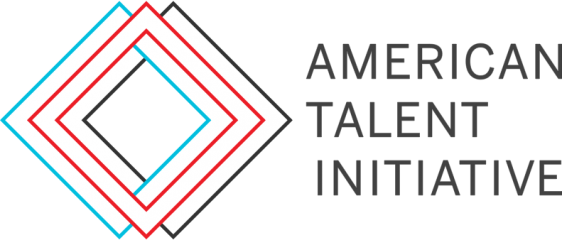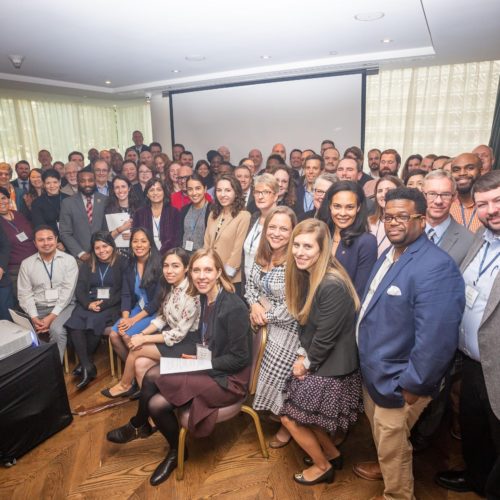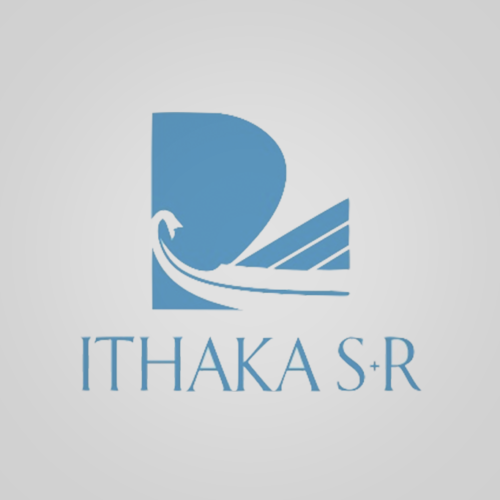Student Veteran Blog Series
Introduction and Overview
By Michael Fried and Emily Schwartz
October 12, 2023
This post originally appeared on the Ithaka S+R blog.
Reading Time: 9 minutes
The ending of the formal COVID-19 public health emergency offers an opportunity to reflect on how the upheaval of the past few years has impacted many facets of life and society, including higher education. At Ithaka S+R, we are taking this opportunity to revisit some of our previous work focused on the experiences of student veterans (see note on language below) that was completed just prior to the pandemic to see how things may have changed during this unusual time. This blog series will update and extend our previous work by reporting on the most recent, if admittedly limited, enrollment and completion rates for student veterans. We supplement these statistics with reporting on direct conversations with leaders in the field who work to support student veterans as institutional administrators as well as leaders of several non-profit organizations that partner with institutions to enroll and support student veterans.
Even as higher education comes to a new sense of normal following the pandemic, political and legal disruptions to long-established norms and expectations are emerging. With many states questioning or forbidding an explicit focus on diversity, equity, and inclusion, institutions and administrators looking to maintain or increase demographic heterogeneity along multiple dimensions will need to look beyond the mechanisms currently in place. Expanding enrollment efforts and support services for student veterans is one such way to admit students from varied racial, geographic, and experiential backgrounds and ensure their academic success. This imperative is even greater for highly selective institutions following the Supreme Court decisionlimiting the use of race in admissions decisions.
Research also shows that veterans who do attend college are not attending the institutions where they are most likely to graduate. Currently, only 22 percent of veterans using GI Bill benefits attend institutions with graduation rates above 70 percent, compared to 31 percent of the general student population. However, there are reasons to believe this will improve-high-graduation rate institutions are increasingly interested in enrolling veterans, and the 2021 closing of the "90/10 loophole" will help deter the undue influence of for-profit institutions where students have little chance of graduating.
To help make the case for the many ways student veterans enrich academic communities, and in turn are enriched by those communities, we spoke to the institutional facilitators of several of the most highly regarded and largest student veteran support programs in the country to identify what makes their programs so successful and how the student veteran population is evolving. We also spoke to the leaders of three prominent non-profit organizations that work to make connections between veterans and high-graduation rate institutions, exactly the kinds of institutions many in the military might not otherwise consider for their education.
Below, we describe the specific organizations and stakeholders who participated in these conversations, along with some of the key insights they shared. This extended overview of the organizations, institutions, and individuals we spoke with as part of this blog series sets the stage for and contextualizes the remainder of this occasional series.
The Warrior-Scholar Project
One of the primary obstacles to student veteran success at high-graduation rate institutions is a lack of familiarity with the campus culture and related anxieties about being "ready" to fully engage in the intellectual life of the institution. The Warrior-Scholar Project (WSP) confronts this challenge directly with intensive academic boot camp programs aimed at preparing student veterans in three broad disciplinary areas: the humanities, business and entrepreneurship, and STEM. These boot camps are offered at over 20 institutions, all of which have a national reputation for quality academic programs and high graduation rates.
Ithaka S+R spoke with Ryan Pavel, the chief executive officer of Warrior-Scholar Project and former Marine, about how changes within the student veteran population interact with the accelerating pace of change in higher education in general. We also talked about the relationships that non-profit organizations have with both student veterans as well as the institutions enrolling those same students.
The Posse Foundation
One of the struggles that veterans face in accessing higher education is that their experiences and accomplishments often are unfamiliar to admissions officers. The Posse Foundation works to connect aspiring high-potential student veterans with administrators at high-graduation rate institutions to create groups of 10 students (the so-called Posse) who ultimately enroll together to create a cohort experience of mutually reinforcing support and community. Scholarships, dedicated mentors, and other support services mitigate many of the challenges that cause student veterans to leave college prior to graduation, leading to graduation rates of 90 percent for cohort members.
President and Founder Deborah Bial and Vice President for External Affairs Rassan Salandy spoke with Ithaka S+R about the Posse program in general and how they tailor that program for the student veteran community. One milestone moment we discussed was how Ithaka S+R Managing Director Cappy Hill, in her previous role as president of Vassar College, first broached the idea of applying the Posse model to post-9/11 military veterans. Our conversation also focused on the complex mix of institutional aid, federal funding, and GI Bill benefits that student veterans rely on to pay for their education.
Service to School
Many, though certainly not all, graduating high school students have school counselors to help them move through the many bureaucratic hurdles of applying to college. Admissions offices at highly selective institutions, for their part, are set up well to receive these materials from high school applicants and make evaluations about applicants' suitability for admission. Student veterans are at a disadvantage in both of these areas, with scant access to pre-college advisors and experiences that admissions officers often have difficulty understanding. Service to School (S2S) aims to bridge this gap by helping student veterans prepare for the admission process, most notably by translating military experiences and accomplishments into the language of college admissions officers. At the same time, S2S also works directly with high-graduation rate institutions to facilitate sharing of best practices.
Service to School's recently installed CEO Alec Emmert, a former nuclear submarine officer, and COO Jim Selbe, a Marine Corps veteran, spoke with us about their work connecting student veterans with high-graduation rate institutions and some surprising upsides to changes in higher education due to the pandemic. So many institutions moving to test-optional admissions removed a barrier that had been holding back student veterans from applying. S2S observed that applications from enlisted military personnel increased 58 percent between 2021 and 2022. We also talked about partnerships between institutions and support organizations, such as the VetLinkcollaboration between S2S and almost 30 high-graduation rate institutional admissions offices.
Cornell University
Cornell University's current priorities around enrolling and supporting student veterans arose from commitments made by Provost Michael Kotlikoff in 2017 to enroll 100 military veterans as undergraduate students. Two years later the university hired retired Marine Corps 1st Sgt. Mary Fisk as a full-time student veteran advisor. She joined Kyle Downey, senior associate director of admissions and veteran recruitment coordinator, a veteran of the Army Reserves, in a highly successful approach to recruiting, admitting, and graduating student veterans. We spoke with both Mary and Kyle about how their partnership has created a seamless coordination between admissions and advising to help student veterans feel supported throughout their Cornell experience.
As dedicated support staff, Mary and Kyle are able to maintain regular communication with faculty members and administrators who have student veterans in their courses or programs. These relationships with other campus stakeholders allow Mary and Kyle to hear from instructors who "rave" about the dedication student veterans have for their studies and amplify that praise in professional development modules being developed for other staff members across the university. With anticipated growth of Cornell's student veteran population, Mary and Kyle are looking forward to adding a new assistant director for transfers and veterans in the Office of Admissions as well as creating additional dedicated space on campus in which the veteran community can gather.
Texas A&M University
The theme of coordination across units and dedicated staff resources continued in our conversation with Texas A&M University's Vice Provost for Student Success Tim Scott, former Marine Corps Colonel and Director of Veterans Services Gerald "Jerry" Smith, and Military Admissions Counseling Advisor Karen Allen. The central hub of student veteran activity is the Don & Ellie Knauss Veteran Resource and Support Center (VRSC), founded in 2012, which facilitates access to information, resources, and support services for student veterans throughout the application, enrollment, and graduation process. The VRSC provides a central location for student veteran services, so there is a natural transition from admissions advising to academic advising as these offices are literally down the hall from one-another, helping ensure student veterans are not lost in institutional bureaucracy.
Serving so many student veterans on campus creates a microcosm of the national picture of student veterans. One way TAMU's student veteran population has changed in ways that reflect larger trends throughout the country is the growing transition from serving combat veterans to higher proportions of veterans who have not seen combat. These changes are an important bellwether for the kinds of supports and services student veterans will need now and in the future. At TAMU, as elsewhere, the majority of student veterans have been admitted as transfers, which comes with the challenges of credit loss and lack of institutional onboarding that are endemic to the transfer process. With the end of active combat missions in Afghanistan and Iraq, more and more non-combat veterans will be seeking admission in ways that are more similar to traditional high school graduates, necessitating a shift in resources and support programs.
The University of Chicago
There is a focus on holistic service provision at the University of Chicago in the person of Beau Butts, with whom we spoke about the university's approach throughout the student veteran lifecycle. Beau, an Army veteran himself, wears a lot of hats-serving as an admissions officer, academic advisor, and career advisor, while maintaining relationships with housing and financial aid offices. He noted that the university's commitment to enrolling student veterans started at the senior leadership level with Vice President James Nondorf cultivating support from the trustees who were veterans as well as the president. That support enabled the program to grow from 0 to 100 student veterans in four years with plans for continued growth. Beau attributed the success of the program and its students to creating the program's infrastructure prior to enrolling any students to truly integrate student veterans into the undergraduate community.
One of the key features of the student veteran experience is the private apartment units leased by the university, which allows for student veterans to have a home for themselves and their family members that is connected with their academic experience. This approach helps mitigate one of the barriers student veterans face, namely showing a sufficient income history to lease a home in Chicago. The network of residents in these units have become a center for community development for the student veterans on campus, especially during the pandemic, where the university started a tradition of setting up a Thanksgiving "fixings" bar in an outdoor area that veteran residents could use to supplement their own holiday dinners.
Columbia University
Columbia University is the home of a national center for student veteran issues, the Center for Veteran Transition and Integration (CVTI), the mission of which is to improve veteran student success not just at Columbia, but all institutions. CVTI creates and curates resources for student veterans and the instructors and staff who support them, including a free edX course on transitioning from military service to post-secondary education. We spoke with CVTI Founder and Vice Dean of the School of General Studies Curtis Rodgers as well as Director of Higher Education Transition and Partnerships Beth Morgan about their work at Columbia and the university's active engagement with community college partners to recruit transfer students, including veterans.
The School of General Studies was founded with the goal of helping returning and non-traditional students complete a bachelor's degree, making efficient transfer pathways and supporting policies a priority. These institutional relationships with community colleges allow Columbia to recruit veteran students from the variety of places where they are learning, not just military bases. Through the work of CVTI and others within the Ivy League, Curtis and Beth hope to lead a broader conversation about easing transitions for veterans and transfer students in general, even if that increases completion for students from other institutions.
Syracuse University
Home to an interdisciplinary research center focused on the post-service lives of veterans, the D'Aniello Institute for Veterans & Military Families (IVMF), Syracuse University has had a commitment to veterans for more than a decade. This work has been led by Vice Chancellor for Strategy and Innovation Michael "Mike" Haynie, who earned his PhD while in the Air Force. In our conversation with Mike, he offered several observations about the national landscape for veteran and other military-connected students based on the institute's research, including a convergence of interest between student veterans and four-year institutions. As a result of the pandemic and growing enrollment uncertainties around the so-called demographic cliff, higher education leaders have a renewed interest in growing the population of college-going students, and veterans and military families are often at the forefront of such initiatives. He also noted that the opportunity to earn a college degree remains a consistently strong motivation for military service, resulting in a robust pipeline ready to meet that institutional interest.
Mike also talked about more local activities the university is undertaking to recruit and support more student veterans. One particularly promising effort aims to create an education and employment pipeline for student veterans between a local community college, the university, and a technology factory being built nearby that is funded by the CHIPS and Science Act. This legislation requires that a percentage of employees at the new factory be veterans, so the university is building its capacity to enroll and graduate more students with engineering degrees to meet that workforce need, to the benefit of the student veterans, the local economy, and both educational institutions.
Blog Series Highlights
We will be integrating the content of these conversations with new analysis of publicly available data on student veterans to offer emerging insights on this vital and growing student population. Future blog series topics include:
- The changing face(s) of the student veteran population
- A review of successful institutional support practices
- Challenges that student veterans face in getting credit for completed courses
- Next steps thought leaders, institutional leaders, and policymakers should take to advance this work in a highly fluid educational environment.
_______________________________________
Note: We primarily use the phrase "student veterans" throughout this blog series based on feedback received from our interview participants as this construction helps transitioning military members think of themselves as students first and veterans second. On occasion, we may use the phrase "veteran students" when doing so adds to the clarity of the writing or when that is the term used by a participant or other primary source.


